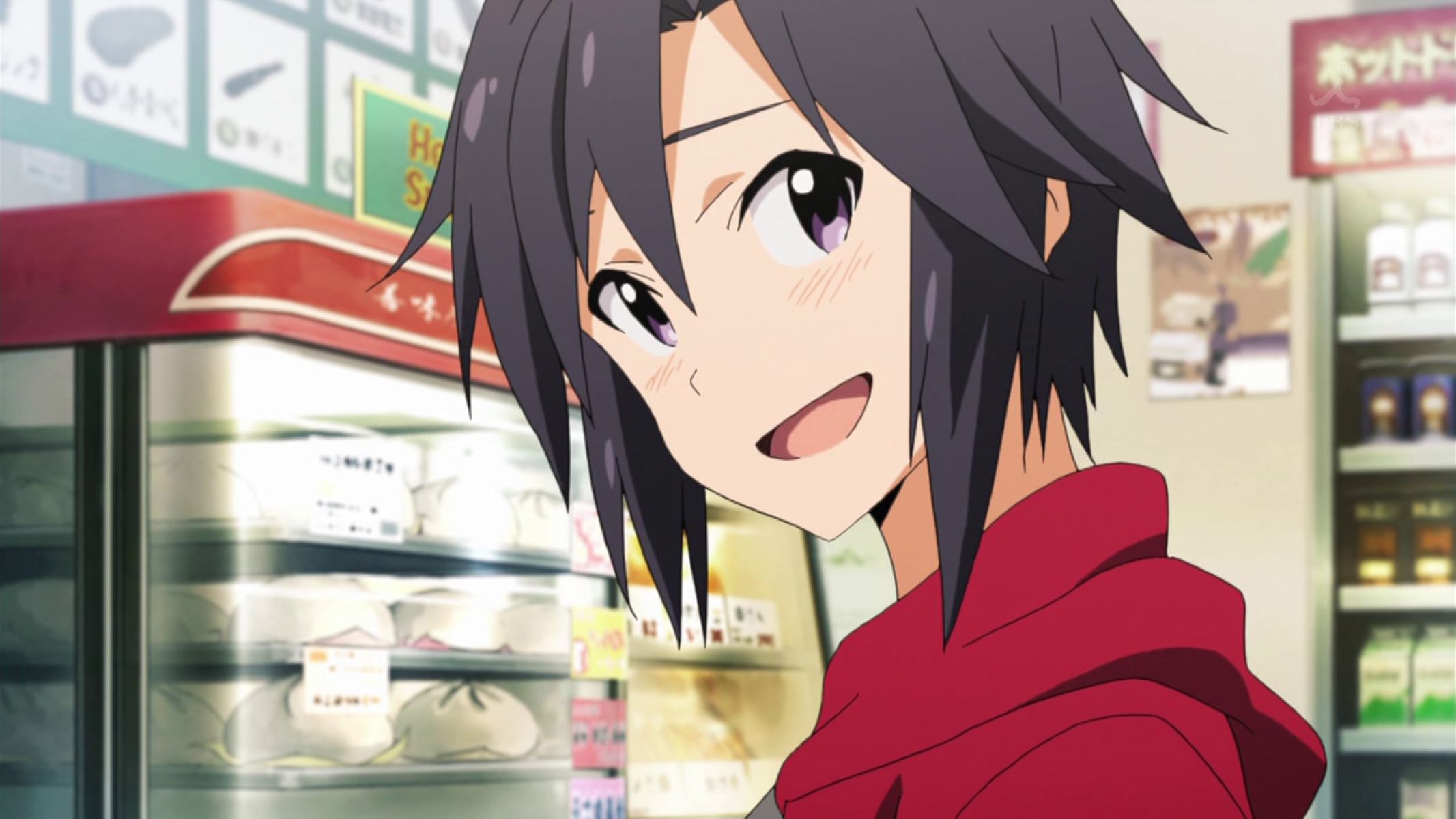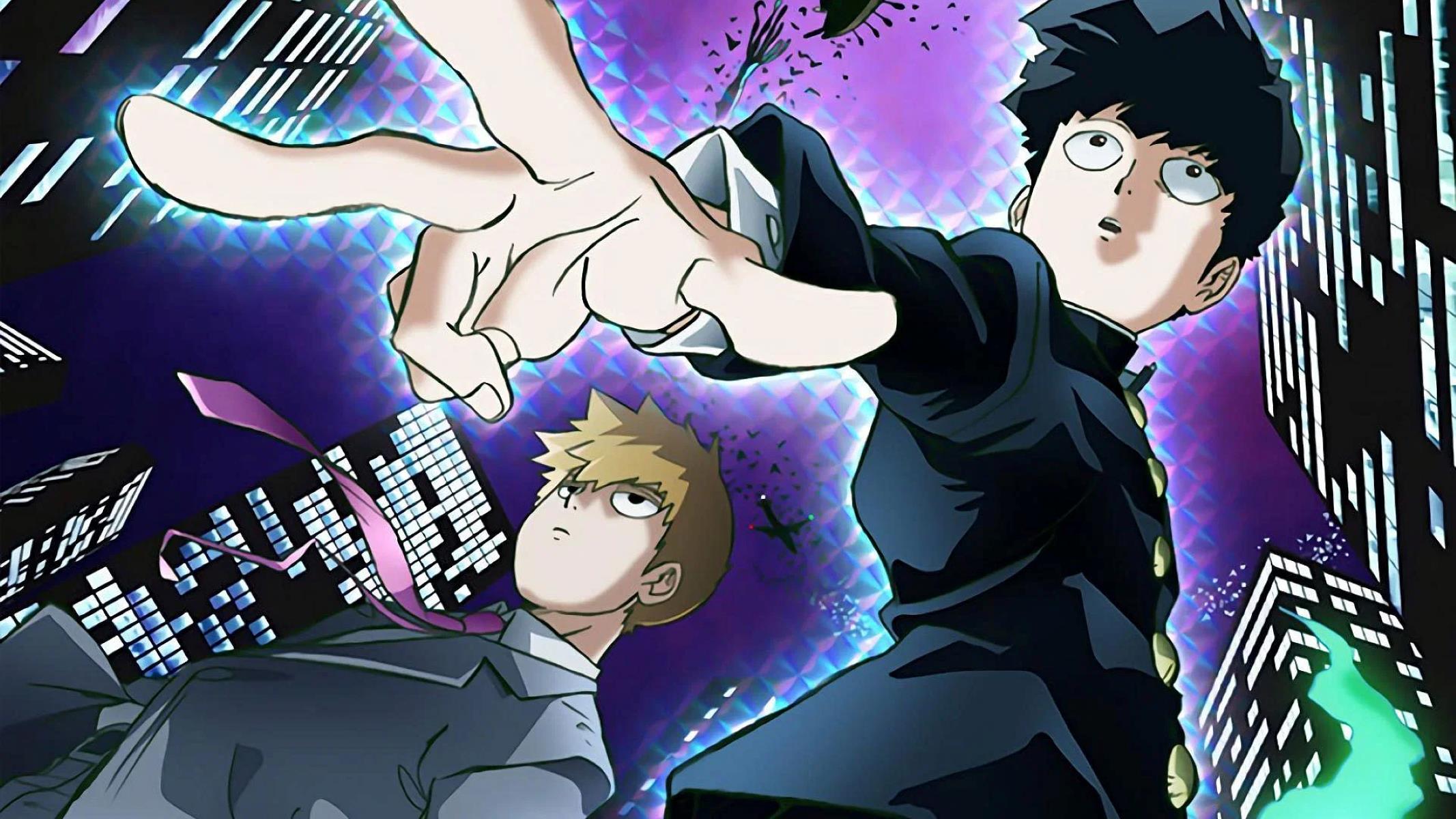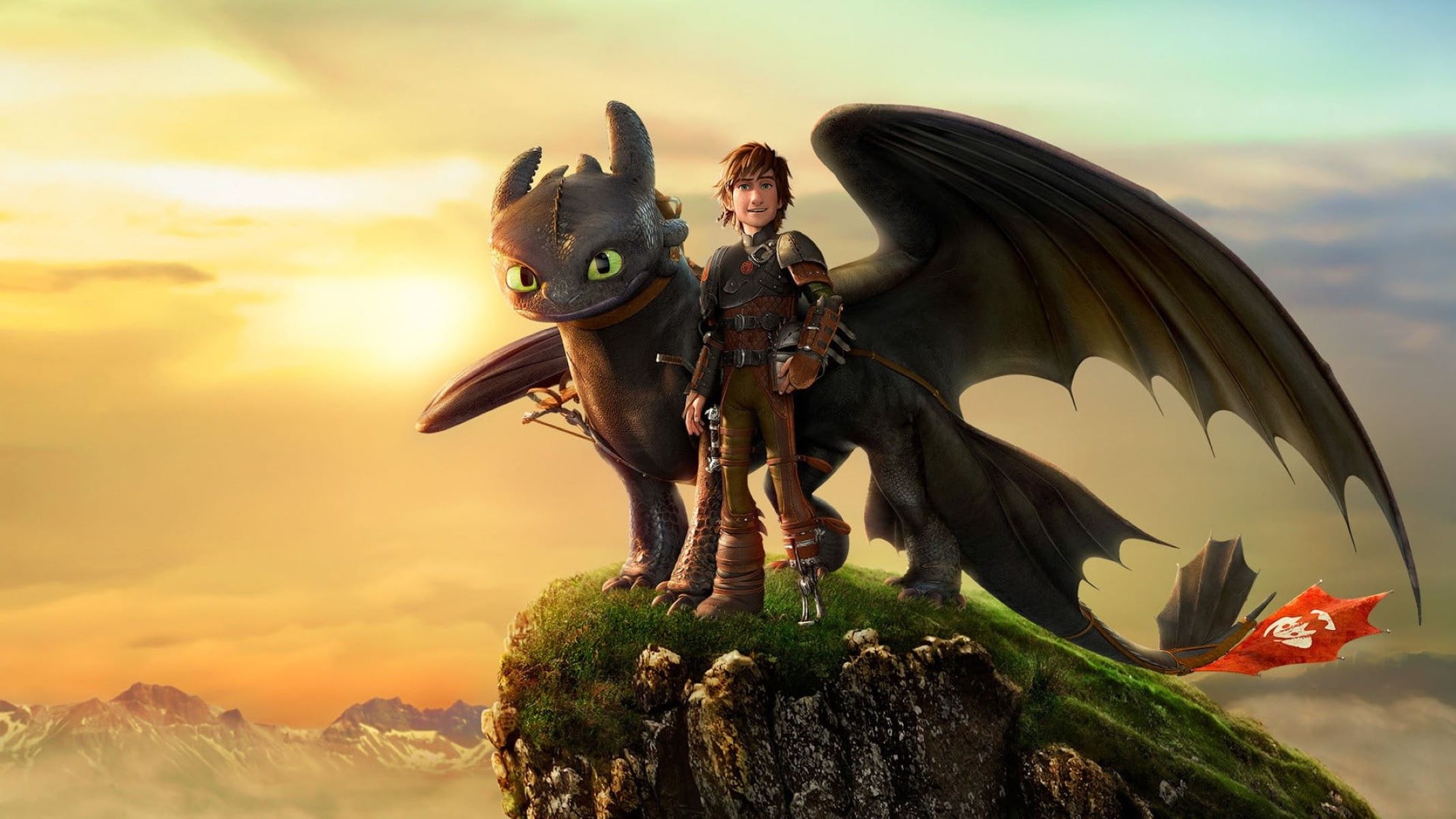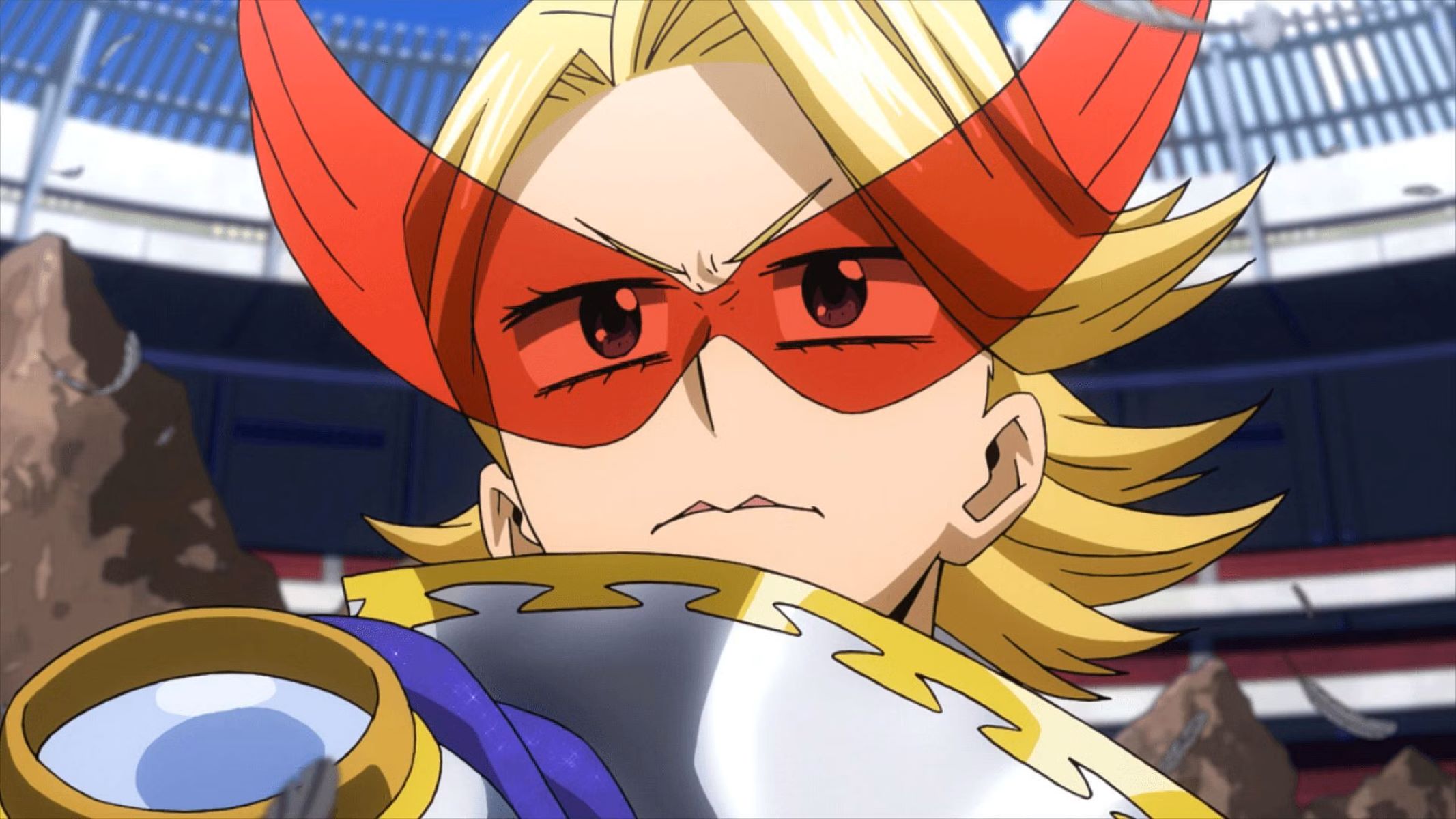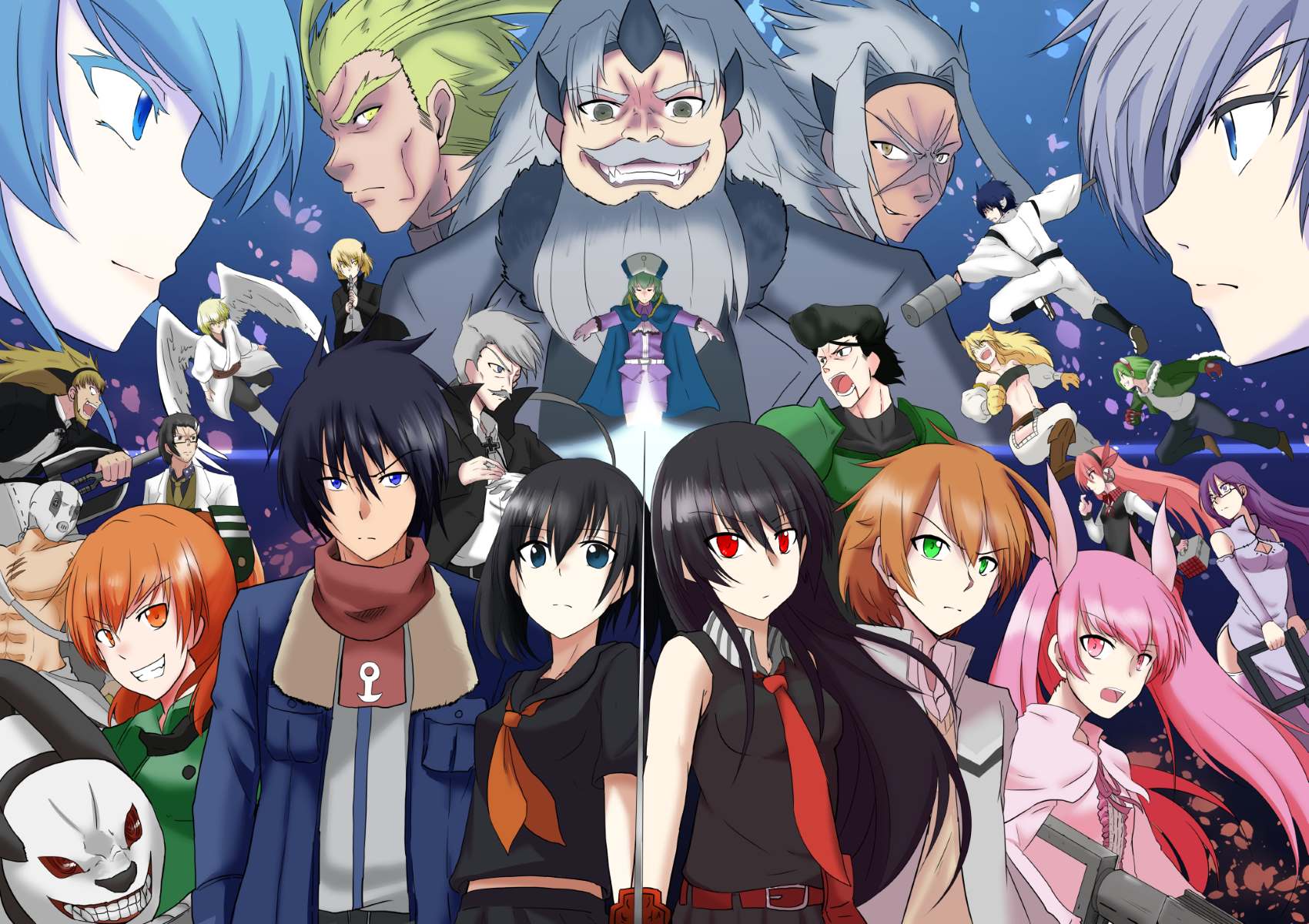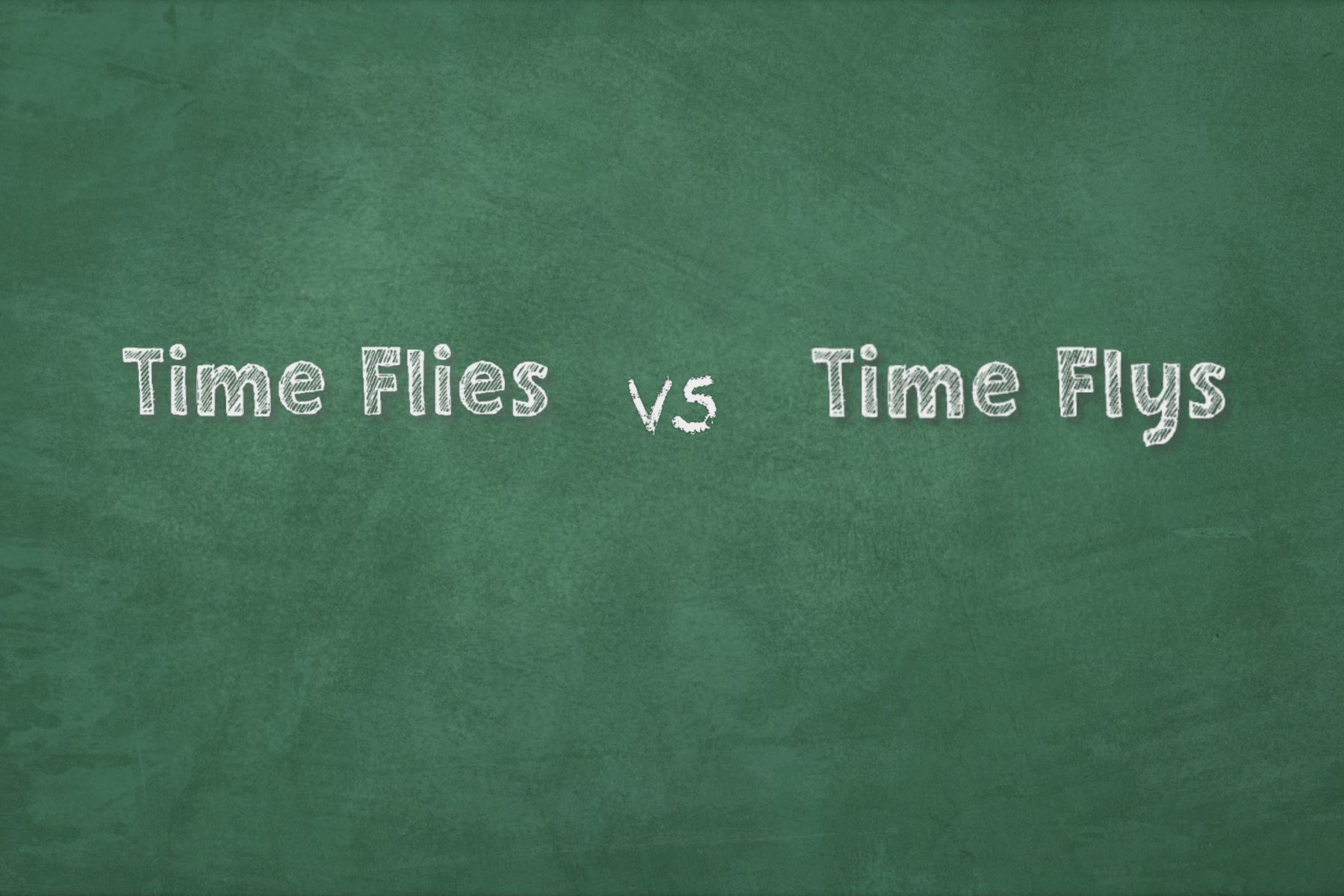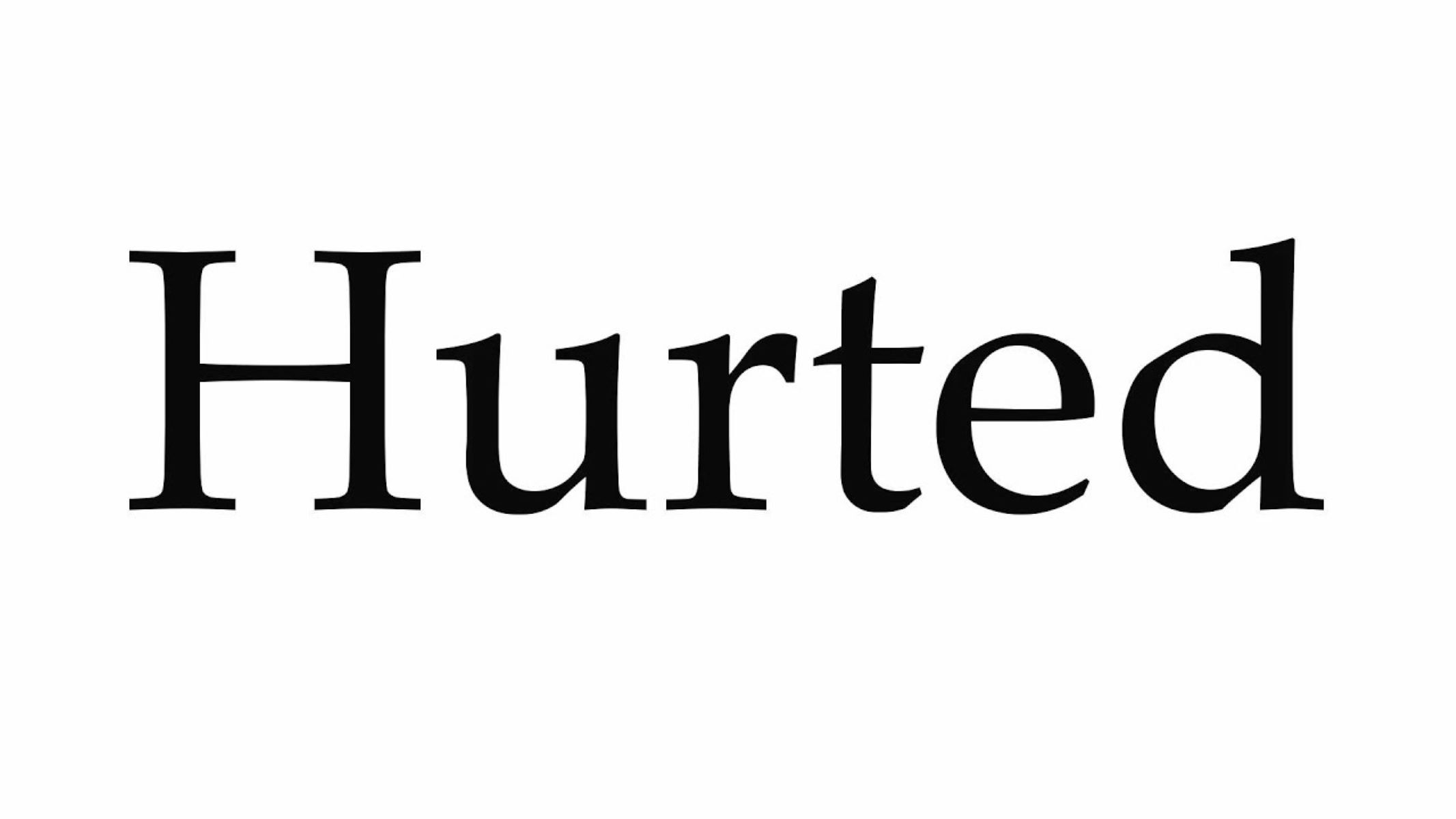Home>Entertainment>The Surprising Allure Of Traps In Anime: Are These Controversial Characters Worth Your Time?
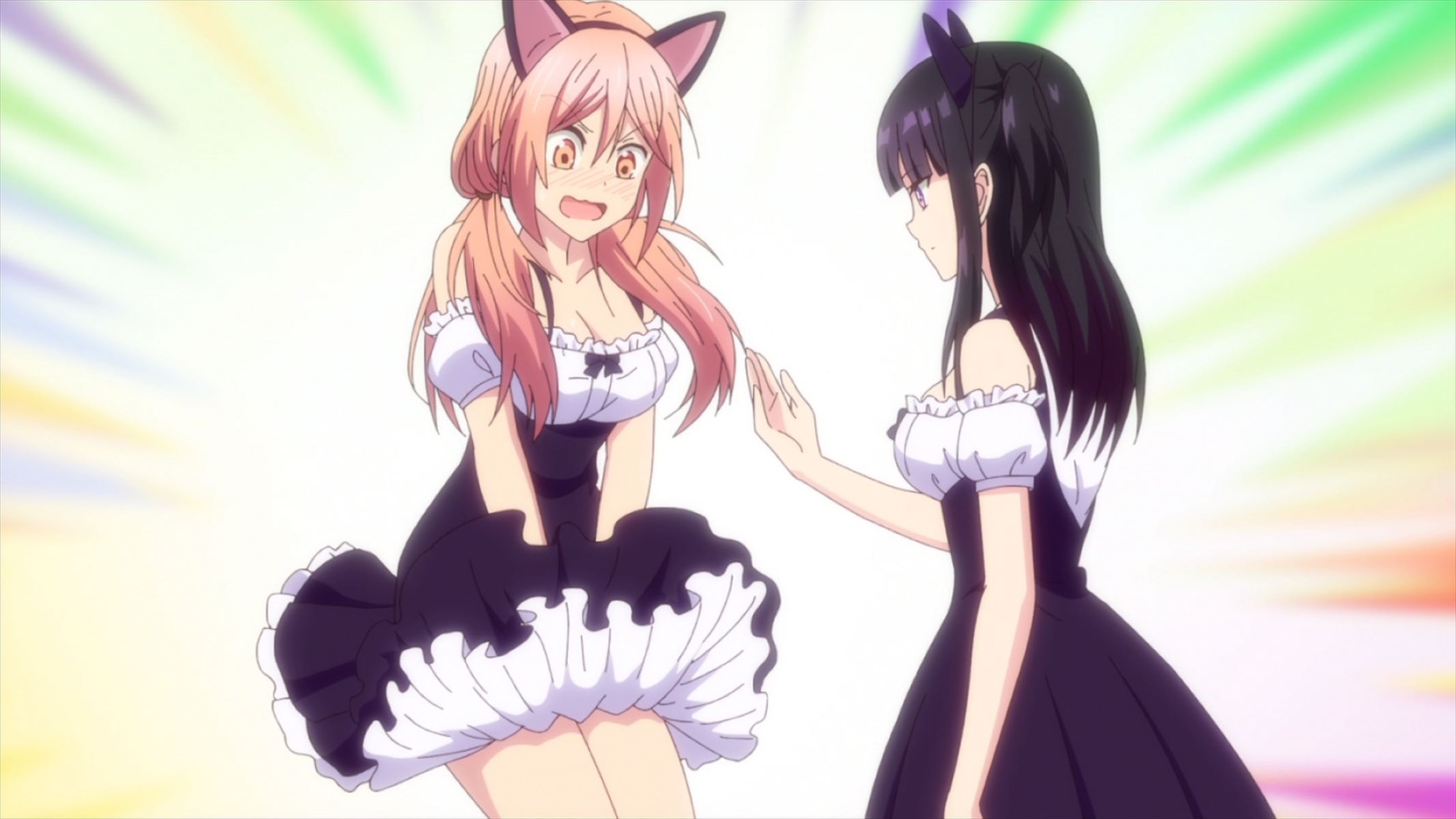

Entertainment
The Surprising Allure Of Traps In Anime: Are These Controversial Characters Worth Your Time?
Published: February 19, 2024
Discover the captivating appeal of traps in anime and whether these controversial characters are worth your time. Explore the surprising allure of entertainment in this thought-provoking analysis.
(Many of the links in this article redirect to a specific reviewed product. Your purchase of these products through affiliate links helps to generate commission for Regretless.com, at no extra cost. Learn more)
Table of Contents
Introduction
Anime, a vibrant and diverse form of entertainment, has captured the hearts of millions worldwide with its compelling narratives, rich character development, and visually stunning artistry. Within this captivating realm, a unique and often controversial character archetype has emerged, known as "traps." These characters, who possess traits that defy traditional gender norms, have sparked intense discussions and debates within the anime community.
The term "trap" in anime refers to characters who defy conventional gender expectations, often blurring the lines between male and female characteristics. These characters may possess physical attributes typically associated with one gender while displaying behaviors or mannerisms more commonly linked to the opposite gender. The concept of traps has given rise to a complex and multifaceted discourse, prompting enthusiasts to ponder the implications and significance of these characters within the anime landscape.
As we delve into the world of traps in anime, it becomes evident that these characters elicit a wide range of reactions from audiences. Some viewers embrace traps as a refreshing departure from traditional character tropes, celebrating the diversity and complexity they bring to storytelling. Others, however, view traps through a more critical lens, raising thought-provoking questions about representation, societal norms, and the potential impact on viewers, particularly those who may be navigating their own gender identities.
In this exploration, we will navigate the nuanced terrain of traps in anime, shedding light on the controversy, allure, and artistic representation of these characters. By delving into the multifaceted nature of traps, we aim to unravel the complexities surrounding their portrayal and examine whether these characters offer a compelling and worthwhile addition to the anime experience. Join us as we embark on a thought-provoking journey through the captivating world of traps in anime, where the boundaries of gender expression and storytelling are continually being redefined.
Understanding Traps in Anime
Traps in anime represent a distinctive character archetype that challenges traditional gender norms and expectations. These characters often possess a blend of physical, emotional, and behavioral traits that transcend conventional gender boundaries, leading to a thought-provoking exploration of identity and expression within the anime narrative.
At the core of understanding traps in anime is the recognition of their multifaceted nature. These characters defy simplistic categorization, as they embody a complex interplay of masculine and feminine attributes. Physically, traps may exhibit features typically associated with one gender while expressing mannerisms, emotions, or social roles traditionally linked to the opposite gender. This duality creates a compelling dynamic that invites audiences to contemplate the fluidity of gender expression and the diverse spectrum of human identity.
Furthermore, traps in anime often challenge preconceived notions of gender presentation and representation. By subverting traditional expectations, these characters prompt viewers to confront their own perceptions of gender and identity, fostering a deeper understanding of the complexities inherent in human expression. Through their portrayal, traps serve as a catalyst for introspection, encouraging audiences to embrace diversity and appreciate the intricacies of individuality.
In the realm of storytelling, traps offer a rich tapestry of narrative possibilities. Their unique blend of characteristics adds depth and dimension to the plot, enabling creators to explore themes of self-discovery, acceptance, and the evolving nature of personal identity. By weaving traps into the fabric of the narrative, anime storytellers have the opportunity to craft compelling and empathetic character arcs that resonate with audiences on a profound emotional level.
Moreover, the portrayal of traps in anime reflects the medium's capacity for artistic expression and social commentary. Through the lens of these characters, creators have the opportunity to address societal norms, gender expectations, and the complexities of human relationships. This artistic exploration not only enriches the storytelling experience but also fosters meaningful conversations about representation, diversity, and the evolving landscape of gender dynamics within the anime community and beyond.
In essence, understanding traps in anime requires a nuanced appreciation of their role in challenging, redefining, and celebrating the spectrum of gender expression. These characters serve as a compelling lens through which audiences can explore the intricacies of identity, empathy, and the boundless potential of storytelling within the vibrant world of anime.
The Controversy Surrounding Traps
The presence of traps in anime has sparked a contentious debate within the anime community and beyond. At the heart of this controversy lies a complex interplay of perspectives, ethical considerations, and societal implications. One of the central points of contention revolves around the portrayal of traps and its potential impact on audience perceptions and attitudes toward gender identity.
Critics argue that the depiction of traps in anime may perpetuate harmful stereotypes or misconceptions about gender, potentially reinforcing rigid societal expectations and contributing to the marginalization of individuals who do not conform to traditional gender norms. Furthermore, concerns have been raised regarding the potential for traps to be sensationalized or objectified, leading to a superficial or reductive representation of gender diversity.
Additionally, the controversy surrounding traps in anime intersects with broader discussions about inclusivity, representation, and the ethical responsibilities of content creators. Some critics assert that the portrayal of traps may inadvertently overshadow authentic and nuanced representations of gender identity, potentially overshadowing the experiences of individuals navigating their own gender journeys.
On the other hand, proponents of traps in anime argue that these characters offer a platform for exploring and celebrating gender diversity, challenging societal norms, and fostering empathy and understanding. They contend that traps can serve as a vehicle for promoting inclusivity and broadening the spectrum of representation within the anime landscape. Furthermore, supporters of traps emphasize the importance of recognizing the artistic freedom and creative expression of content creators, highlighting the potential for nuanced and respectful portrayals of gender nonconformity.
The controversy surrounding traps in anime reflects the broader societal discourse on gender, identity, and representation. It underscores the complexities inherent in navigating the intersection of art, social responsibility, and individual interpretation. As the conversation continues to evolve, it prompts critical reflection on the ethical considerations, impact, and potential for constructive dialogue surrounding the portrayal of traps in anime.
In essence, the controversy surrounding traps in anime underscores the need for thoughtful and nuanced engagement with the portrayal of gender diversity within the anime medium, inviting audiences to consider the multifaceted implications and ethical dimensions of representation.
The Appeal of Traps to Audiences
The allure of traps in anime extends beyond their controversial nature, captivating audiences through a myriad of compelling factors. One of the primary appeals lies in the complexity and depth of these characters. Traps often possess multifaceted personalities, blending traits traditionally associated with different genders. This duality creates a sense of intrigue and unpredictability, drawing viewers into the intricate nuances of their identities and experiences.
Furthermore, traps offer a fresh and unconventional perspective within the anime landscape. By defying traditional gender norms, these characters challenge preconceived notions and invite audiences to explore the rich diversity of human expression. This departure from conventional character archetypes injects a sense of novelty and originality into storytelling, captivating viewers with narratives that transcend the boundaries of gender expectations.
The appeal of traps also stems from their ability to evoke empathy and understanding. Through their nuanced portrayal, traps provide a lens through which audiences can empathize with the complexities of identity and self-discovery. Their struggles, triumphs, and inner conflicts resonate with viewers on a deeply human level, fostering a sense of connection and emotional investment in their journeys.
Moreover, traps often serve as catalysts for thought-provoking discussions on gender, representation, and societal dynamics. Their presence prompts audiences to critically examine their own perceptions and biases, sparking meaningful conversations about inclusivity, acceptance, and the evolving landscape of gender expression. This intellectual engagement adds a layer of depth to the viewing experience, inviting audiences to contemplate the broader implications of gender diversity within the context of anime and beyond.
In essence, the appeal of traps to audiences lies in their ability to challenge, inspire, and provoke introspection. These characters offer a compelling exploration of identity, representation, and the boundless potential of storytelling, enriching the anime experience with their thought-provoking narratives and multifaceted personas.
Exploring the Representation of Traps in Anime
The representation of traps in anime serves as a captivating lens through which the complexities of gender expression and identity are artfully depicted. Within the vibrant tapestry of anime storytelling, traps embody a rich diversity of experiences, challenging traditional norms and inviting audiences to engage with the multifaceted nature of human identity.
At the heart of exploring the representation of traps in anime is the recognition of their role in defying simplistic categorizations. These characters transcend conventional gender expectations, offering a nuanced portrayal that celebrates the fluidity of gender expression. Through their physical attributes, mannerisms, and emotional depth, traps embody a compelling fusion of masculine and feminine traits, blurring the boundaries of traditional gender roles and inviting audiences to embrace the spectrum of human diversity.
Furthermore, the representation of traps in anime extends beyond surface-level characterization, delving into the intricacies of their personal journeys and inner conflicts. These characters navigate the complexities of self-discovery, acceptance, and the evolving landscape of identity, offering a poignant exploration of the human experience. Their narratives resonate with authenticity, portraying the triumphs and challenges of embracing one's true self in a world shaped by societal expectations and perceptions.
Moreover, the artistic representation of traps in anime serves as a testament to the medium's capacity for introspection and social commentary. Through the lens of these characters, creators have the opportunity to address profound themes of inclusivity, empathy, and the evolving dynamics of gender representation. The portrayal of traps fosters meaningful conversations about the diverse spectrum of human experiences, challenging audiences to confront their own perceptions and biases while celebrating the richness of individual expression.
In essence, exploring the representation of traps in anime unveils a compelling tapestry of storytelling that transcends traditional boundaries. These characters serve as beacons of diversity, resilience, and authenticity, offering a profound reflection of the human journey and the boundless potential for empathy and understanding within the anime narrative.
Are Traps Worth Your Time?
Traps in anime, with their thought-provoking narratives and multifaceted personas, offer a compelling exploration of identity, representation, and the boundless potential of storytelling. Their presence challenges traditional gender norms, inviting audiences to engage with the rich diversity of human expression. As viewers immerse themselves in the captivating world of traps, they are presented with an opportunity to explore the complexities of gender identity, empathy, and societal dynamics.
The worth of investing time in exploring traps in anime lies in the profound impact of their narratives. These characters navigate the intricacies of self-discovery, acceptance, and the evolving landscape of identity, resonating with authenticity and emotional depth. Their stories serve as a poignant reflection of the human experience, prompting audiences to contemplate the triumphs and challenges of embracing one's true self in a world shaped by societal expectations.
Furthermore, traps serve as catalysts for meaningful conversations about inclusivity, representation, and the evolving dynamics of gender expression. Engaging with their narratives fosters introspection, challenging viewers to confront their own perceptions and biases while celebrating the richness of individual expression. The exploration of traps in anime transcends mere entertainment, offering a gateway to deeper understanding and empathy.
Moreover, the artistic representation of traps in anime underscores the medium's capacity for introspection and social commentary. Through the lens of these characters, creators have the opportunity to address profound themes of inclusivity, empathy, and the evolving dynamics of gender representation. The portrayal of traps encourages audiences to engage with nuanced and respectful depictions of gender nonconformity, enriching the viewing experience with thought-provoking narratives that resonate on a profound emotional level.
In essence, the worth of investing time in traps in anime lies in the transformative power of their narratives. These characters offer a compelling exploration of identity, representation, and the boundless potential for empathy and understanding within the anime narrative, making them a valuable and enriching addition to the anime experience.
